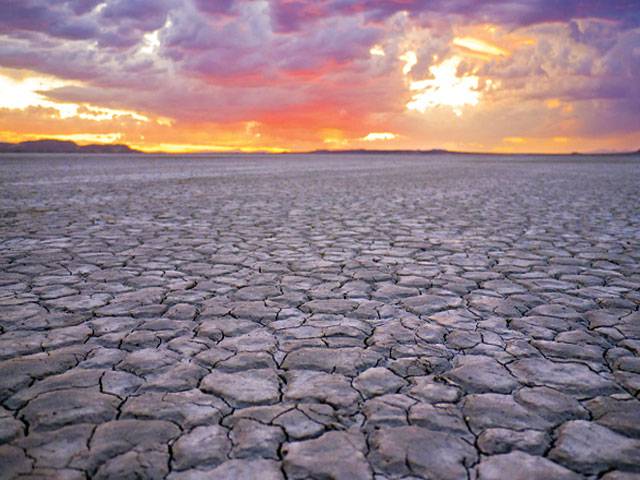Bjorn Lomborg - Yet this is not supported by science. “General statements about extremes are almost nowhere to be found in the literature but seem to abound in the popular media,” climate scientist Gavin Smith of the NASA Goddard Institute for Space Studies said last month. “It’s this popular perception that global warming means all extremes have to increase all the time, even though if anyone thinks about that for 10?seconds they realize that’s nonsense.”
Global warming is real. It is partly man-made. It will make some things worse and some things better. Overall, the long-run impact will be negative. But some of the most prominent examples of extreme weather are misleading, and some weather events are becoming less extreme.
The UN Intergovernmental Panel on Climate Change (IPCC) delivered a 600-page reporton extreme weather in 2011. It got little attention - because it is nuanced.
Global warming, in general, will mean higher temperatures. This causes more heat waves - more extreme weather. But it also causes fewer cold waves - less extreme weather. Many more people die from excessive cold than excessive heat, so fewer people will die from cold and heat in the future. By mid-century, researchers estimated in 2006, that means about 1.4?million fewer deaths per year. In the continental United States, heat waves in the past decade exceeded the norm by 10 per cent, but the number of cold waves fell 75 per cent.
Moreover, global warming will mostly increase temperatures during winter, at night and in cold places, making temperature differences less extreme.
Global warming will also cause more heavy rain; this is clearly more extreme. But warming will also help alleviate water scarcity - less extreme. About 1.2 billion fewer people are expected to live with water scarcity by the end of the century because of increased precipitation.
Drought is expected to increase in some regions while decreasing in others. Overall, the impact will probably be slightly more extreme. Likewise, sea levels will rise, which will mean more flooding of coastal structures - more extreme weather. The total impact is likely to be less than 0.1 per cent of global economic output.
Hurricane wind speeds are likely to increase (more extreme), but the number of hurricanes is likely to decrease or hold steady (less extreme). The number of extra-tropical cyclones is likely to decline (less extreme).
Obama’s examples of more extreme weather from droughts, floods, wildfires and hurricanes are weak examples for the United States. Wildfire may be the only one of these indicators that is increasing in the United States, but to a large degree this is because fire suppression efforts have resulted in more material being available to burn.
The IPCC found that “droughts have become less frequent, less intense, or shorter, for example, in central North America.” A scientific overview published in June in the Bulletin of the American Meteorological Societyfound that the severe drought of 2012, which at one point covered 39?per cent of the United States, was still much less extreme than droughts in the 1930s (which covered 63 per cent) and the 1950s (50 per cent). And all those droughts pale next to the six-decade mega-drought in what is now the US West in the 12th century.
Damage from flooding in the United States has declined from 0.2 per cent of gross domestic product in 1940 to less than 0.05 per cent today. And US hurricanes have not increased in frequency, intensity or normalized damage since at least 1900. It has been more than seven years since the United States was hit by a Category 3 or stronger hurricane. That is the longest such hurricane drought since 1900.
A new paper in the journal Nature shows on a crucial measure that there is no increase in extremes. Looking at temperature variability as one kind of extreme weather, the authors document that extreme weather globally has been constant since 1960.
Moreover, the researchers found that extreme weather as temperature variability will decline in the future with higher levels of carbon dioxide. They laconically conclude: “Our findings contradict the view that a warming world will automatically be one of more overall climatic variation.”
It is understandable that a lot of well-meaning people, wanting stronger action on global warming, have tried to use the meme of extreme weather to draw attention. But alarmism and panic are rarely the best way to achieve good policies. The argument that global warming generally creates more extreme weather needs to be retired. –Washington Post
Friday, April 19, 2024
Myths about climate change

SC suspends ECP’s re-polling order in PP-51
April 19, 2024
Court approves plea bargain of Parvez Elahi’s co-accused
April 19, 2024
Zardari creates another parliamentary record
April 19, 2024
KP politicians, civil society laud President’s address
April 19, 2024
A Tense Neighbourhood
April 19, 2024
Dubai Underwater
April 19, 2024
X Debate Continues
April 19, 2024
Hepatitis Challenge
April 18, 2024
IMF Predictions
April 18, 2024
Kite tragedy
April 19, 2024
Discipline dilemma
April 19, 2024
Urgent plea
April 19, 2024
Justice denied
April 18, 2024
AI dilemmas unveiled
April 18, 2024
ePaper - Nawaiwaqt
Advertisement
Nawaiwaqt Group | Copyright © 2024





